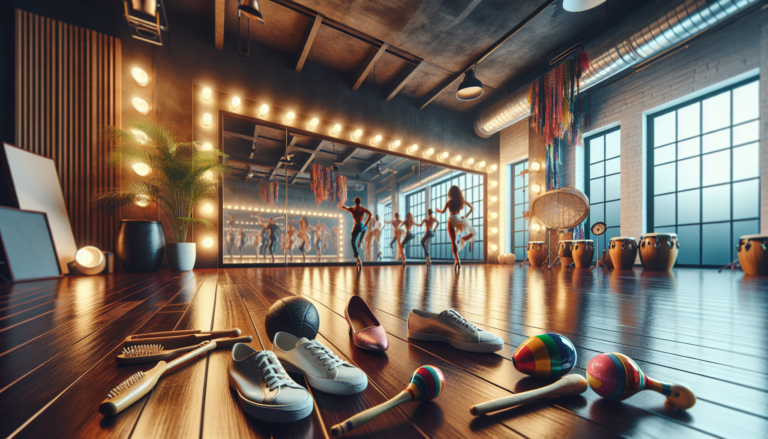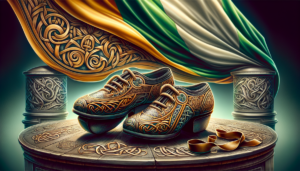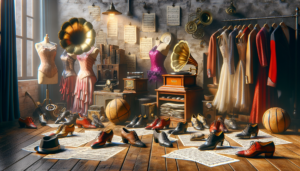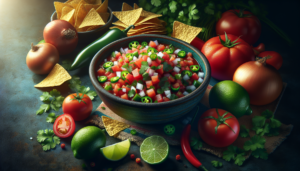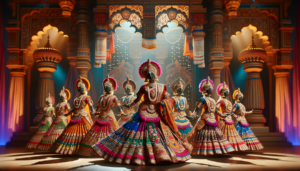Introduction to Dance Rhythm
Dance and music are intrinsically linked, with rhythm serving as the foundation that ties them together. Understanding dance rhythm is essential for anyone looking to improve their dancing skills and feel more confident on the dance floor. Whether you’re a complete beginner or have some experience, mastering the beat can take your dance moves to the next level.
What is Dance Rhythm?
Dance rhythm refers to the pattern of beats in a piece of music that a dancer follows to perform their moves in sync. It’s the underlying pulse that drives the movement and flow of the dance. Recognizing and internalizing this rhythm allows dancers to express themselves fully and connect with the music on a deeper level.
Importance of Rhythm in Dance
Rhythm plays a crucial role in dance for several reasons:
- It provides structure and timing for dancers to follow
- It allows dancers to synchronize their movements with the music and each other
- It creates a sense of unity between the music and dance
- It enhances the emotional impact and artistic expression of the performance
Without a strong sense of rhythm, dancing can appear disjointed, awkward, and out of sync with the music. Developing your rhythmic skills is therefore a key aspect of becoming a proficient dancer.
Finding the Beat
The first step in dancing on rhythm is being able to identify and lock into the beat of the music. This can be challenging for beginners, but with practice and the right techniques, anyone can learn to find the beat consistently.
Techniques to Identify the Beat
Here are some tips to help you find the beat in any piece of music:
- Listen for the bass: The bass line or kick drum often plays on the primary beats, making it easier to follow
- Count in sets of 4: Most dance music follows a 4-beat pattern (4 counts/beats per measure) with emphasis on beats 1 and 3
- Nod your head or tap your foot: Moving a part of your body to the beat can help you feel and internalize the rhythm
- Use multiple senses: Combining listening with visual cues from fellow dancers and physical sensations can reinforce your sense of rhythm
Remember, it’s normal to struggle with this at first. The key is to keep practicing regularly with different types of music until you can comfortably find and follow the beat.
Exercises to Improve Beat Recognition
Here are a few simple exercises you can do to improve your beat recognition skills:
1. Clap or tap along to the beat of your favorite songs
2. Count out loud in time with the music: “1, 2, 3, 4”
3. March in place to the beat, emphasizing steps on beats 1 and 3
4. Practice short, repetitive dance moves or step-touches in time with the music
5. Take online rhythm training classes or use mobile apps designed to test and enhance your skills
Dancing on Rhythm
Once you’re comfortable finding and locking into the beat, the next step is to coordinate your movements and dance in sync with the rhythm. Again, this takes practice, but there are proven ways to make it easier and speed up your progress.
Basic Dance Moves to Practice
Start by mastering a few foundational dance moves that you can perform in time with the beat:
| Move | Timing | Common Variations |
|---|---|---|
| Step-touch | 1 step each beat | Double-time, side taps |
| Grapevine | 4 counts per full rotation | With turns, claps overhead |
| Pivot turns | 1-2 beats per 180° or 360° turn | Half pivots, reverse direction |
| Box Step | 4 counts per full box | Progressive, diagonals |
Practicing these moves repetitively to different songs will develop your muscle memory and make it easier to dance on beat without having to think about it. Over time you can layer on more complex variations and create your own movements that still adhere to the musical rhythm.
Common Mistakes and How to Avoid Them
As you practice dancing on rhythm, watch out for these common mistakes:
- Rushing the beat: Avoid anticipating the next beat and “getting ahead” of the music. Focus on being patient and controlled in your movements.
- Ignoring the tempo: Match your moves to the speed of the song. Dancing too fast or slow relative to the music will make you look off-rhythm.
- Overdoing it: Don’t try to put a different move on every single beat. Simpler is often better, especially for faster songs.
- Tensing up: Relax and loosen up your body to help you flow better with the music. Tensing your muscles tends to make movements jerkier and less natural.
If you notice yourself making these errors, consciously adjust your approach and keep working at it. It’s part of the process everyone goes through in learning to dance rhythmically.
Learning Through Dance Tutorials
One of the best ways to improve your rhythm and dancing skills is by following along with well-structured video tutorials. Online dance classes break down techniques step-by-step and allow you to learn at your own pace from the comfort of home.
Benefits of Online Dance Tutorials
Dance tutorials offer several advantages over in-person classes:
- Convenience: You can access tutorials anytime that fits your schedule and practice from any location with an internet connection
- Affordability: Online classes are often much cheaper than studio lessons, and many high-quality tutorials are even available for free
- Variety: You can find tutorials in almost any dance style from instructors all over the world
- Personalized learning: The ability to pause, rewind, and replay sections of a video allows you to fully absorb the material and work at your own speed
Whether you’re looking for a how-to on a specific dance move or a full multi-part course on rhythm for beginners, you can find a wealth of content online to help you level up your skills.
Recommended Resources and Platforms
To get started with online dance tutorials, check out these top recommended resources:
- STEEZY Studio: Offers 1000+ classes in a variety of dance styles with a structured curriculum for all levels
- CLI Studios: Provides on-demand dance classes with a focus on choreography and industry-leading instructors
- Millennium Dance Complex: Known for training top professional dancers and celebrities, MDC has a digital platform with classes for those serious about dance
- YouTube: You can find many free high-quality dance tutorial channels on YouTube, but the quality and structure varies considerably, so look for ones with large subscriber counts and positive comments
Feel free to explore different platforms and dance YouTubers to find one that resonates with your learning style and dance goals. Consider investing in a premium membership if you want a more comprehensive, guided learning experience.
Practical Tips for Dancing in Social Settings
Learning rhythm and dance moves at home is one thing, but actually busting a move in front of other people is a whole different ball game! Here are some practical tips to help you apply your skills at parties and clubs and feel confident shaking your groove thing.
Dancing at Clubs and Parties
While it may seem intimidating at first, dancing in social settings should ultimately be lighthearted and fun. Here’s how to make the most of it:
- Embrace the nerves: Feeling nervous before dancing in front of other people is totally normal. Treat it as excitement rather than fear.
- Scope out the dancefloor: Take a moment to observe the crowd and vibe so you get a feel for the overall energy and style of dancing before you start.
- Find your own groove: You don’t have to do what everyone else is doing. Lock into the rhythm in your own way, whether that’s bouncing and swaying or rocking more complex dance moves.
- Keep it simple: A few well-executed, stylistically appropriate basic dance moves will take you far in most party settings. Don’t feel pressured to break out your entire repertoire or try Tik Tok trends.
Most importantly, remember that in a party environment, everyone is much more focused on having a good time than judging your dancing. As long as you’re enjoying yourself and vibing to the music, you’re doing it right!
Building Confidence on the Dance Floor
If you still lack confidence in your dancing abilities, try using these strategies:
- Master your rythmn first: The better you internalize the timing and rhythm of the music, the more confident you’ll feel moving to it. If you’re struggling, step back and practice more with dance tutorials.
- Have a go-to groove: Work on perfecting 1-2 simple, versatile dance moves you can always pull out if you’re feeling self-conscious or aren’t sure what to do.
- Focus on feeling over appearance: Shift your mindset from worrying about how you look to immersing yourself in how the music makes you feel. The more you can get out of your head and into the rhythm, the more confident you’ll appear.
- Practice social dancing: Go to more casual dance events like outdoor festivals, group classes, or socials where the emphasis is on dancing for pure enjoyment. The lower-stakes environment will help you gain confidence over time.
Remember, everyone starts somewhere. Be patient with your progress and celebrate each small victory on your journey to rhythmic dancing mastery!
Conclusion
Learning to find the beat and execute dance moves on rhythm is an essential but often overlooked aspect of becoming a great dancer. Developing a strong sense of rhythm opens up a whole new level of musicality, creative expression, and confidence in your dancing.
Recap of Key Points
To recap, some key points to remember about mastering dance rhythm include:
- Rhythm is the underlying pulse and beat of the music that guides the dancers’ movements
- Techniques like listening for the bass, counting beats, and moving your body can help you find and lock into the rhythm
- Simple exercises and practicing basic dance moves repetitively will train your brain and body to naturally move on beat
- Online dance tutorials are a convenient and affordable way to learn rhythm and dance techniques from home
- Building confidence in your dancing rhythm boils down to practicing consistently, mastering your fundamentals, and learning to express yourself authentically in social dance settings
Armed with this knowledge and the right resources, any aspiring dancer can learn to feel the beat and get into the groove!
Encouragement to Keep Practicing
Developing excellent dance rhythm doesn’t happen overnight. Like any other skill, it requires focused, consistent practice and a willingness to embrace the learning curve. Don’t get discouraged if you struggle to find the beat or execute moves on time at first – we all go through it!
Remember to start simple, be patient with your progress, and most importantly – keep it fun! The more you relax and let yourself enjoy moving to the music, the more naturally the rhythmic timing and techniques will come. Who knows, you may even discover a hidden talent or passion for dance in the process!
So what are you waiting for? Get up, get grooving, and unlock your dance potential one beat at a time! You’ve got this!
#ED#

